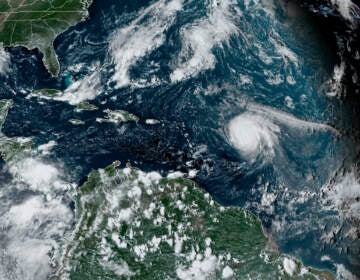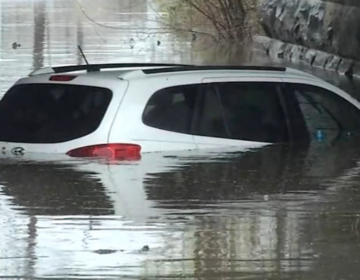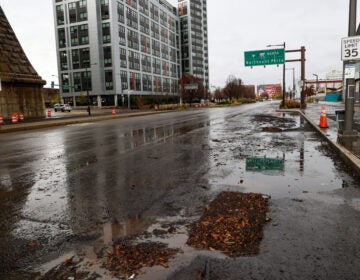5 tips from your neighbors on how to deal with flooding
Flooding can be a life-altering event. While these tips won’t eliminate your flood risk, they could help you reduce your losses.
Listen 6:01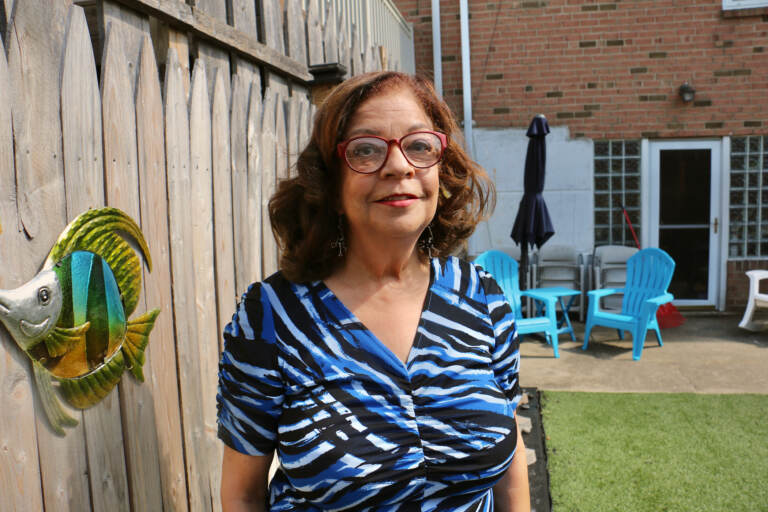
Denise Statham stands in the backyard of her frequently flooded home in Eastwick. (Emma Lee/WHYY)
This story is part of the WHYY News Climate Desk, bringing you news and solutions for our changing region.
From the Poconos to the Jersey Shore to the mouth of the Delaware Bay, what do you want to know about climate change? What would you like us to cover? Get in touch.
It’s mid-hurricane season — one that government forecasters predict will likely be above average.
Last year the remnants of Hurricane Ida brought deadly tornadoes and flooding to the Philadelphia region, killing several people, damaging homes and businesses, and filling the Vine Street Expressway like a canal.
Climate change is raising Philly’s flood risk. A warmer atmosphere holds more moisture, leading to more intense rainfall. Sea level rise from climate change could threaten properties along the Delaware River and parts of the Schuylkill River in the coming decades.
Experts say the development of more buildings and paved surfaces in the Delaware River watershed also contributes to flooding, by blocking rainfall from soaking into the ground, and causing it to run into storm drains and creeks instead.
Many Philly neighborhoods are already vulnerable to flooding. Riverine flooding — where rivers and creeks overflow their banks — affects areas including Eastwick, Manayunk, Upper Roxborough, and East Falls. Combined sewers can back up into homes in neighborhoods like Germantown, Kensington, Northern Liberties, Center City, South Philly, and Port Richmond, according to the Citywide Flood Risk Management Task Force. Parts of Philadelphia, particularly in the Northwest area, can also see street runoff made worse when sewers are overwhelmed.
Floods are life-altering events. They can displace families, set them back financially, and leave lasting emotional scars. Some Philadelphians have experience with flooding, while others may contend with it for the first time in a warmer climate.
PlanPhilly asked several Philadelphians whose homes have flooded: What advice would you give your neighbors?
1) Consider flood insurance
If your home could flood, getting flood insurance is a “no brainer,” said Nelson Haakenson, a semi-retired painting contractor and landlord, who lives in East Falls.
He did not have flood insurance last September, when the remnants of Hurricane Ida filled the basement of his family’s home, cracking his chimney, destroying his hot water heaters, and damaging his boiler. He estimated his home needed somewhere around $25,000 worth of cleanup and repairs, including the cost of labor.
“Being blasé about it was really a big mistake,” Haakenson said.
Most homeowners and renters insurance policies do not cover damage from flooding. That’s something Stephen Wojciechowski did not know, when his one-story home along the Schuylkill River in Upper Roxborough flooded during Ida. He was still displaced at the one-year anniversary of the storm.
“I thought I had it,” he said. “Homeowners [insurance] — I thought that was inclusive. So, there’s my mistake.”
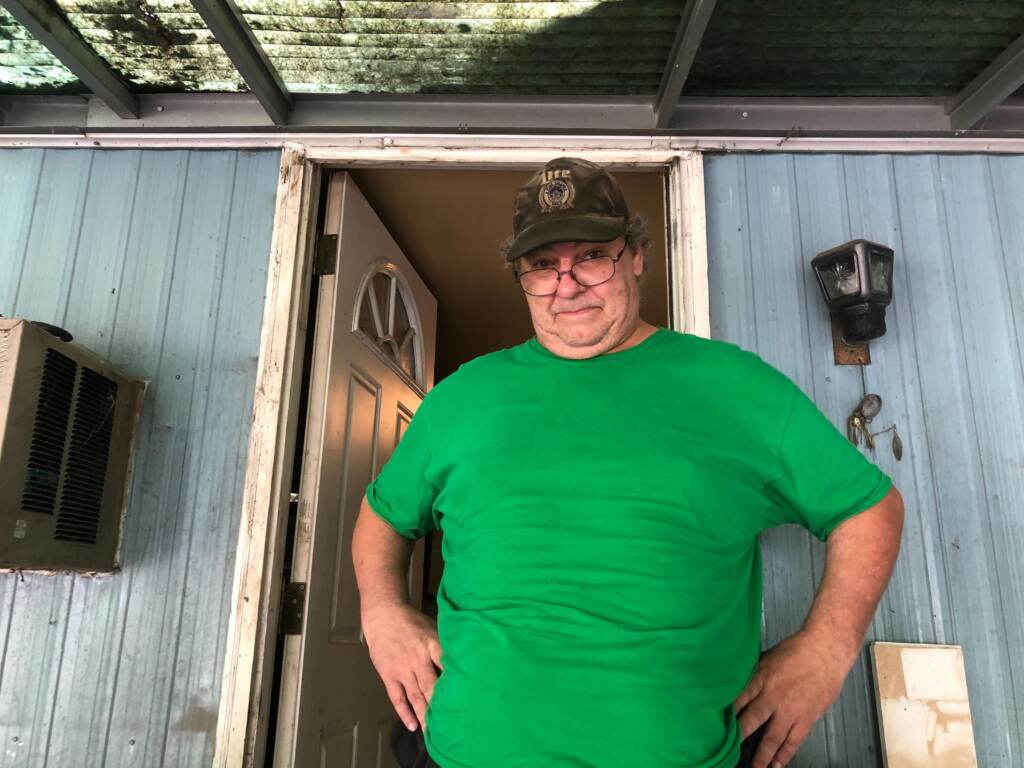
Flood insurance is required for government-backed mortgages in high-risk zones designated by the Federal Emergency Management Agency. But people living in generational homes, people who have paid off their mortgages, or those living just outside of flood zones may not have it.
According to FEMA, more than a fifth of National Flood Insurance Program claims come from outside high-risk zones.
Flood insurance is available through the federal government or private insurers. The National Flood Insurance Program can cover damage to your home, personal belongings, and even damage-prevention items like tarps, pumps, or sandbags.
Be sure to compare different policies, said Brenda Whitfield, a retiree of the banking industry whose home in Eastwick has flooded multiple times. Her family’s flood insurance had crept up to around $6,500 a year, before she switched companies.
“It is very crucial that you shop around to get the cheapest, because companies don’t care that you are struggling,” she said.
Pay attention to your deductible, said Jessica Grimm. Her home in the Fitler Square neighborhood flooded during Ida, but the damage was not enough to reach her $5,000 deductible. Grimm said she considered flood insurance just a “technicality” required to buy her home in a flood zone; she never thought it would actually flood. Her family ended up paying for the repairs from Ida out of pocket.
“Make sure your deductible isn’t something ridiculously high so that in the case this happens again, you can actually get some coverage from the premium you’ve been paying,” she said.
Flood insurance rates through the National Flood Insurance Program have gone down for many Philadelphia residents, under a new rating system the Federal Emergency Management Agency started rolling out last fall.
Longtime Eastwick resident Leo Brundage is one homeowner seeing savings. His insurance premium decreased by almost 40% this year.
“I almost had a heart attack, you know, because about time we getting some kind of break,” he said.
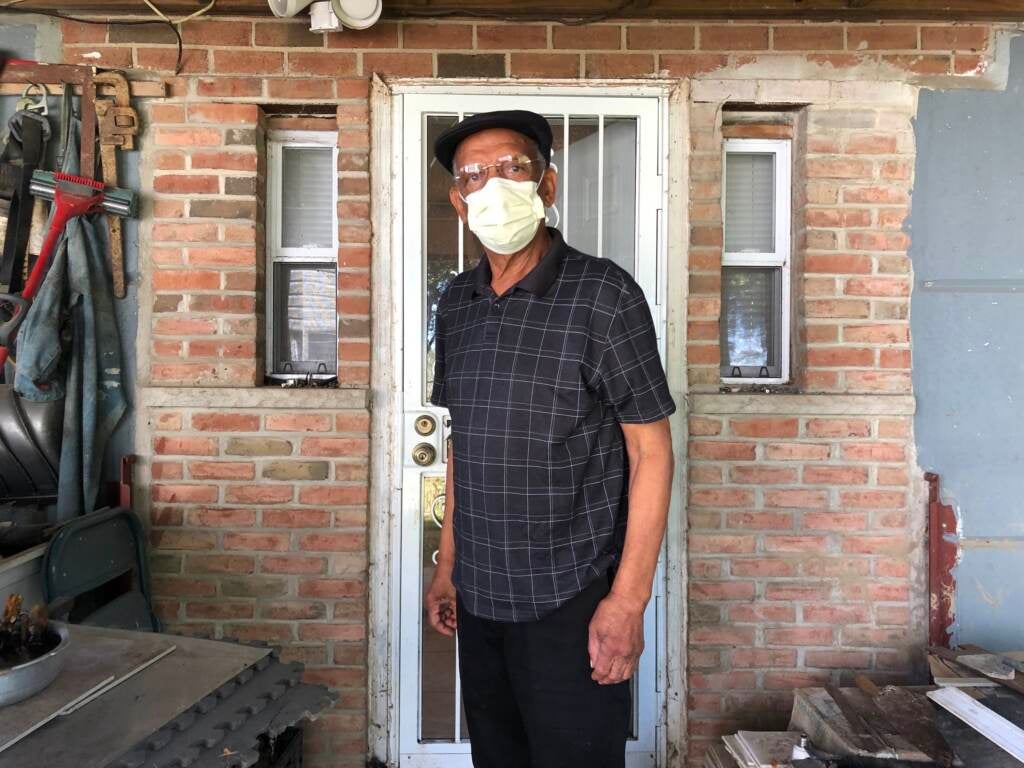
Remember to get flood insurance before a flood hits. Federal flood insurance generally doesn’t kick in until 30 days after you purchase it and does not cover personal property kept in basements or cars.
2) Elevate valuables
Don’t store irreplaceable family photos in your basement. Same goes for important documents or valuable possessions.
Nelson Haakenson, the homeowner in East Falls, lost historic family photos and letters when his basement flooded during Ida. The flood damaged musical equipment, kids’ toys, clothing, and plumbing supplies in the basement, he said — thousands of dollars worth of stuff.
“When it was going into the dumpster, it was just heartbreaking,” he said.
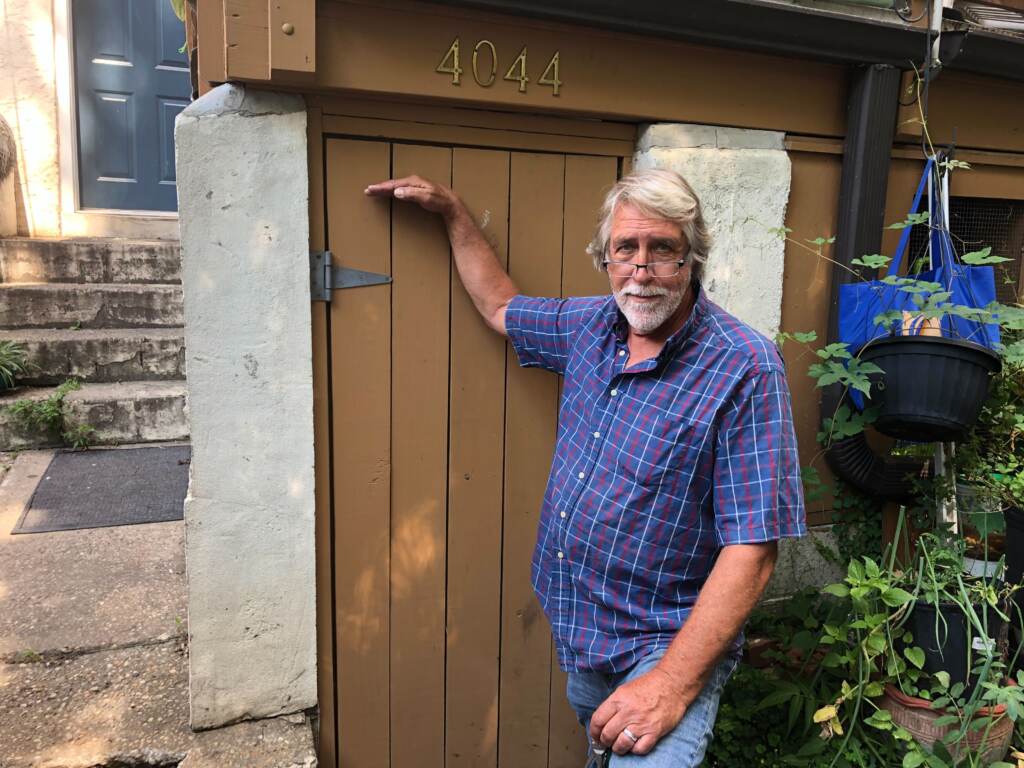
In cases of catastrophic flooding — particularly in one-story homes like Stephen Wojciechowski’s in Upper Roxborough — it can be hard to elevate items out of the reach of floodwaters. Move important items to upper floors, if you have them, or try waterproof containers.
“In my garage, I have shelving and there’s nothing a foot and a half from the ground,” said Denise Statham, a retired pastor whose home in Eastwick has flooded multiple times. “The things that are on the next shelf are in … tubs that are waterproof.”
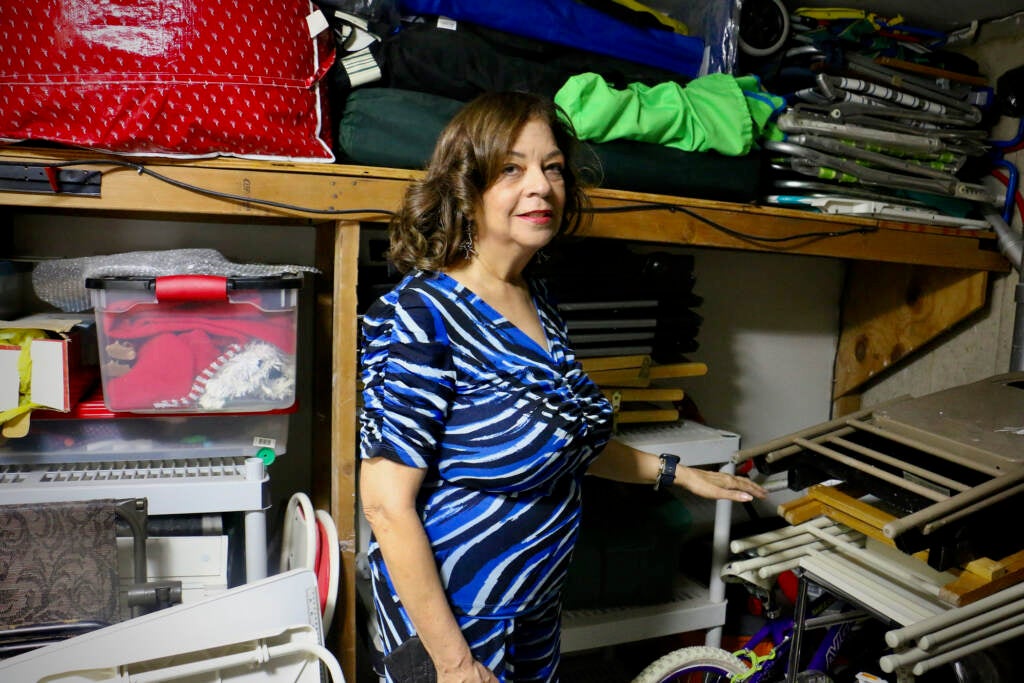
Consider elevating utilities — like heating or cooling systems, hot water heaters, or electrical panels. A good time to do this is when you’re already replacing these things, said Carolyn Caton, deputy director for the Philadelphia Office of Emergency Management (OEM). Some federal disaster aid can help pay for this.
“Even if you just lift things a couple of inches off the ground, [it] can make a huge difference,” she said.
Brenda Whitfield, of Eastwick, had her electrical sockets raised up.
“We learned how to put things up high when we was going back to rebuild,” she said. “Making sure things were at least 4 to 6 feet higher so we wouldn’t have to replace it every year.”
And when a flood is forecast, don’t forget to move your car to higher ground — before floodwaters arrive.
3) Choose flood-resilient materials
When Whitfield moved into her home on one of Eastwick’s most flood-prone streets 50 years ago, she wasn’t aware of the flood risk.
“My basement had carpet, furniture — the works,” she said.
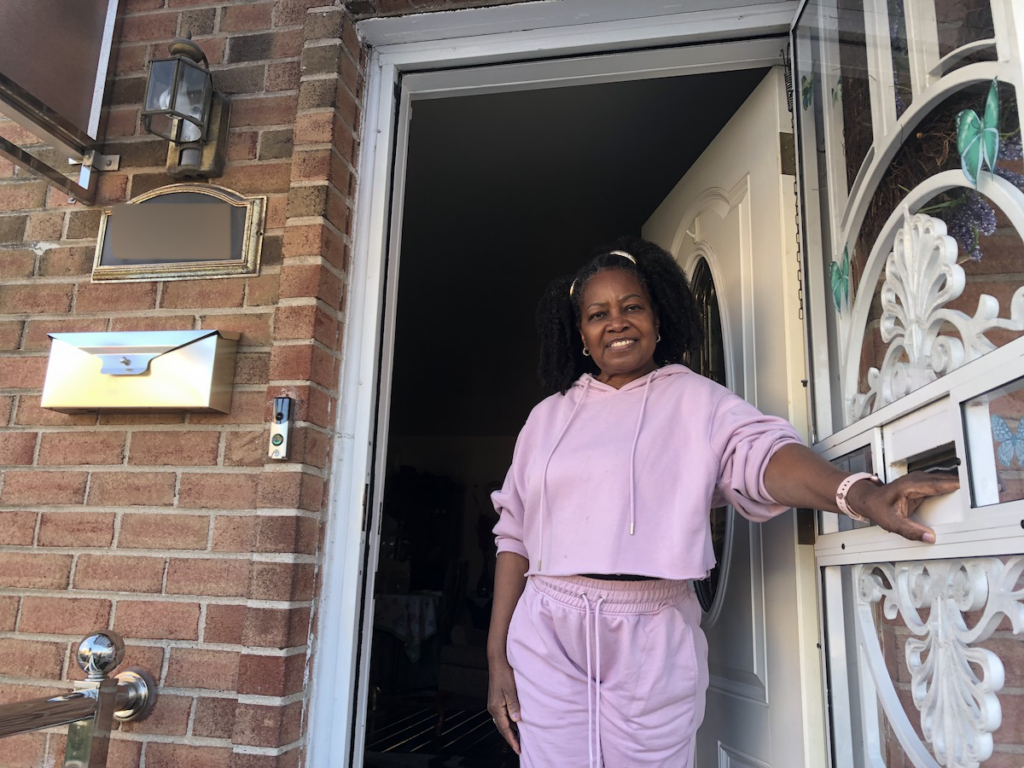
But a finished basement can be a disaster in a flood. Just an inch of water in your home can cause $25,000 worth of damage, according to FEMA.
After Whitfield’s family went through their second flood, she redid the basement with tile instead of carpet.
“Ceramic tile works well because you can scrub it, wash it down … sanitize it, and you’re good to go,” she said. Still, Whitfield wishes she’d been able to put in concrete.
Denise Statham, the retired pastor, has her family room on the ground floor of her home in Eastwick. It has flooded multiple times, so Statham rebuilt it to be more flood-resistant, with “outdoor” furniture inside, and cement tiles on the floor.
Leo Brundage, the other longtime resident of Eastwick, reinforced the back of his ground floor with 4 feet of bricks, raised the windows on that wall up, and made them smaller.
“And that helped, tremendous,” he said.
4) After a flood, record any damage — then clean up ASAP
Be sure to document flood damage. It can help make insurance claims and get some types of federal aid.
Whitfield, of Eastwick, recommends creating a “before list” of furniture, appliances, and finishings in flood-vulnerable areas of your home, and saving receipts. FEMA even recommends keeping serial numbers and material samples.
“Was it a six-panel, solid-core pine door, or was it a steel door, or was it a hollow-core door?” said Haakenson of East Falls. “All those kinds of things come into play when you’re trying to get money to recoup your losses.”
Take not only photos but also videos of items damaged in the flood, he said. Document the “water line” on the interior and exterior walls, said Caton, of OEM.
“Just taking pictures of stuff, it’s not going to tell the whole story,” she said.
Developing a “sophisticated and comprehensive” federal aid application — including for money to help raise utilities — can be “daunting,” Haakenson said, especially while you’re trying to repair your home and continue on with your normal life.
Once you’ve documented the damage, pump standing water out and remove wet items as soon as possible, Haakenson said.
“Even if it’s like an old table that you really loved,” he said. “Anything that’s soaking wet — get it out. … The longer you let damp things stay in a basement area, the more prone you are to getting mold.”
Dry the space with a dehumidifier, or fan if mold has not already started to grow. Mold can pose a serious health risk, so wear an N-95 respirator, goggles and gloves when cleaning up. People with respiratory issues, weakened immune systems, and young kids should not be involved in mold cleanup.
5) If you experience a flood, talk to someone about it
Denise Statham’s Eastwick home flooded during Hurricane Floyd in 1999. For about three years afterward, she said, every time there was a flood warning, her neighbors would stay up all night, trying to sweep water into the storm drains, “just terrified.”
Now, even the sound of rain can trigger intense anxiety in long-time Eastwick residents, Whitfield said — who’s endured three major floods herself.

“Your mind immediately goes to, how long is it going to be? Is it heavy rain? Is it going to stop? Your mind keeps racing and asking questions until you see that rain stop,” she said. “Every time there is rain, every neighbor that has been through a flood literally almost stops breathing.”
Don’t be afraid to lean on your community and ask for help, said Carolyn Caton, with OEM.
“You’d be surprised what people will do to wrap their arms around others who’ve been through things like this,” she said.
Statham, a retired pastor and hospital chaplain, has experience guiding people through traumatic experiences. The best thing to do, she said, is to talk to someone.
“You need a place to share,” she said. “You need to be able to talk about that trauma — because it lives in your body.”
“It takes a while” to recover mentally after living through a flood, Statham said. “So don’t put pressure on yourself.”
 WHYY is one of over 20 news organizations producing Broke in Philly, a collaborative reporting project on solutions to poverty and the city’s push towards economic justice. Follow us at @BrokeInPhilly.
WHYY is one of over 20 news organizations producing Broke in Philly, a collaborative reporting project on solutions to poverty and the city’s push towards economic justice. Follow us at @BrokeInPhilly.

Subscribe to PlanPhilly
WHYY is your source for fact-based, in-depth journalism and information. As a nonprofit organization, we rely on financial support from readers like you. Please give today.




